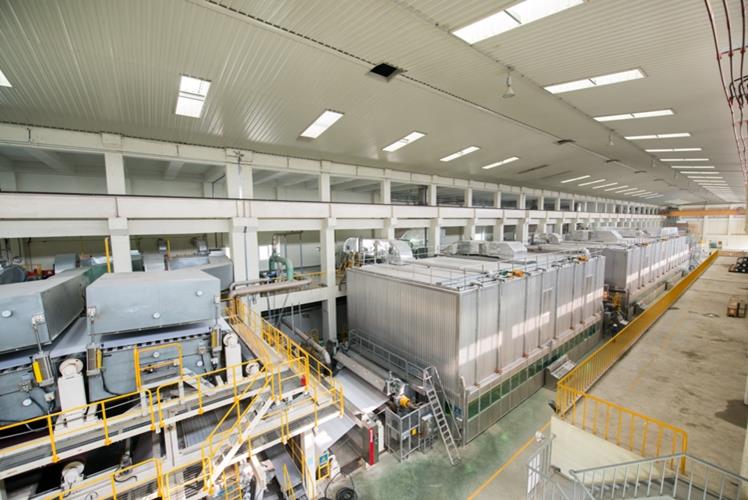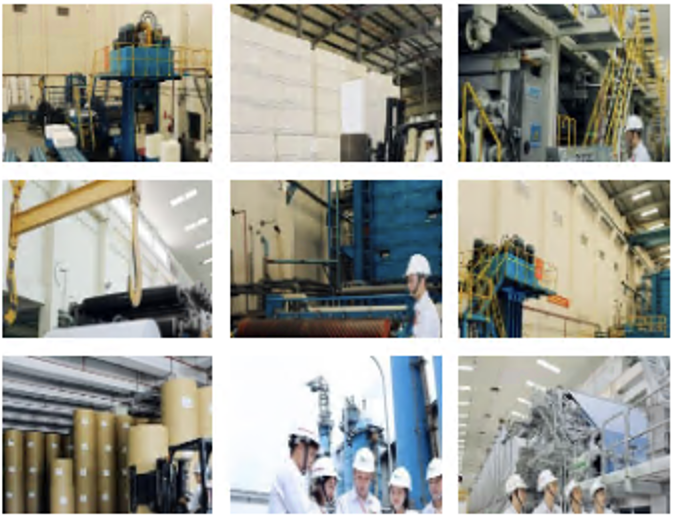The most advantage of BHKP production line
- Elemental chlorine free (ECF) bleaching technology with the modern equipment system mainly originated from Metso brand , manufactured in Sweden and Filand.
- Black liquor recovery boiler: Black liquor separated from the pulp cooking process is concentrated and transferred to the boiler to generate steam for generator and production, while chemical is recovered and is pushed back the next production cycle.
BHKP production process:
- Wood handling section:
Standard acacia logs are gathered at the pulp mill and then fed to debarking drum for removing bark, washing and chipping. After that, wood chips will go through screening system to remove biomass and under-standard pieces. Standard chips are then fed to the digester.
- Cooking and bleaching section:
From the MC tank, pulp will be cleaned and fed to the dryer wire for forming pulp sheet. Pulp sheet goes through pressure and vacuum suction section to raise its dryness up to 50% before coming into the drying box. Out of the drying tunnel, pulp sheet with the dryness of 90% will go to the sheet cutter to make final pulp sheet of 640x800 mm. After that, pulp sheets are baled, packed and strapped with steel wire. Final product is one package including 8 units in which each unit has a dimension of 500x640x800mm.
- Wood handling section:
Standard acacia logs are gathered at the pulp mill and then fed to debarking drum for removing bark, washing and chipping. After that, wood chips will go through screening system to remove biomass and under-standard pieces. Standard chips are then fed to the digester.
- Cooking and bleaching section:
- Cooking: Standard wood chips from wood handling section will be conveyed to the ImpBin vessel for impregnation. Impregnated chips then go to the continuous digester where cooking chemicals and heat break down the lignin, which binds the cellulose fibres together, without seriously degrading the cellulose fibres. The cellulose fibres are separated and known as unbleached pulp. Unbleached pulp will go through the blow tank to cleaning screens for removing knots and dirt. After screening, unbleached pulp will come to the washing stage and then to the bleaching section.
- Bleaching: After screening and washing, pulp solution mixed with bleaching chemicals will be fed to 4 bleaching stages in the order of O2 – Dht – EOP – D1. After each bleaching tower, pulp will be washed again and then go to the next tower. After D1 stage, pulp brightness can reach 89%ISO ± 1 and pumped to the MC tank.
From the MC tank, pulp will be cleaned and fed to the dryer wire for forming pulp sheet. Pulp sheet goes through pressure and vacuum suction section to raise its dryness up to 50% before coming into the drying box. Out of the drying tunnel, pulp sheet with the dryness of 90% will go to the sheet cutter to make final pulp sheet of 640x800 mm. After that, pulp sheets are baled, packed and strapped with steel wire. Final product is one package including 8 units in which each unit has a dimension of 500x640x800mm.







